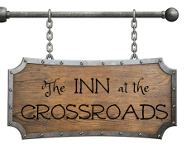
Thoughts:
This recipe is based on one from Clear Flour Bakery, near which I used to live. It makes amazing doughnuts, albeit ones that are still a little inferior to those from the bakery itself. You could get me to wake up at any hour of the morning to get some of those doughnuts. But now living several hours away, getting a hold of the genuine article is no longer practical.
These delectable morning treats have always struck me as oddly medieval. Between those familiar cinnamon and nutmeg, and the prolific currants, they tick several of the standard medieval ingredient boxes. The triple risings make them soft and incredibly fluffy, and I will admit to eating several myself. Every time. They’re SO good. Even the residents of The Inn who don’t especially like sweets enjoy these, since the main sugar content is however much you dust the outsides with.
Proposed Location?
The expense of the spices would point toward one of the more well-heeled households, while the dried currants point toward something somewhat northern. I could see them at Winterfell or Riverrun, but even as far south as King’s Landing or Oldtown. Each location or family cook would probably add their own special ingredients to them, such as candied lemon peel in the capitol, or a dash of rosewater for the Tyrells. And as I type those thoughts, I might have to try some of those variants… strictly for research purposes, you understand. ;)
What do you think would be good?
Baked Currant Doughnut Recipe
Makes about 10 doughnuts
Cook’s Notes: This recipe looks daunting, but the hardest part is waiting for the doughnuts to rise. If I’m serving them with breakfast, I like to start the dough the night before- I let it go through the first rise, then punch it down and leave it somewhere with a neutral temperature to rise the second time overnight. In the morning, all I have to do is form into shapes, let rise the final time, and bake!
Ingredients:
- 1 cup dried currants
- 1 1/2 tsp. instant yeast
- 1/4 cup granulated sugar plus 1 cup for dusting
- 3/4 cup milk, warmed
- 3 cups all purpose flour
- 3/4 teaspoon ground nutmeg
- 1/4 teaspoon cinnamon
- 1 large egg
- 1 stick soft butter, plus 4 -6 Tbs. additional melted butter
- pinch of salt
In a medium bowl, cover the currants with hot water and let stand until softened, 20 minutes. Meanwhile in a small bowl, stir the yeast with 2 tablespoons of warm water and a pinch of sugar and let stand until foamy about 5 minutes.














